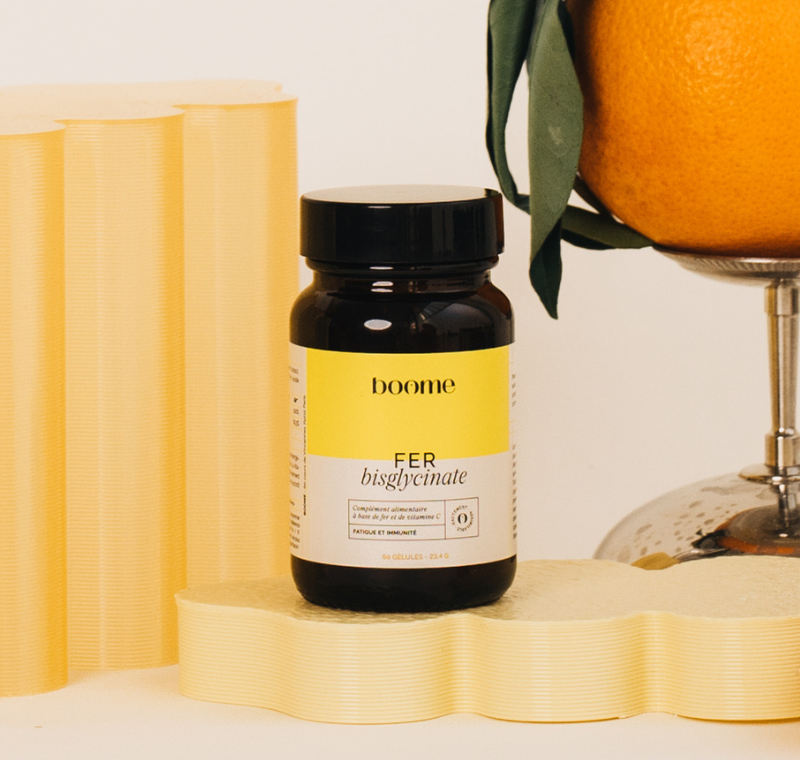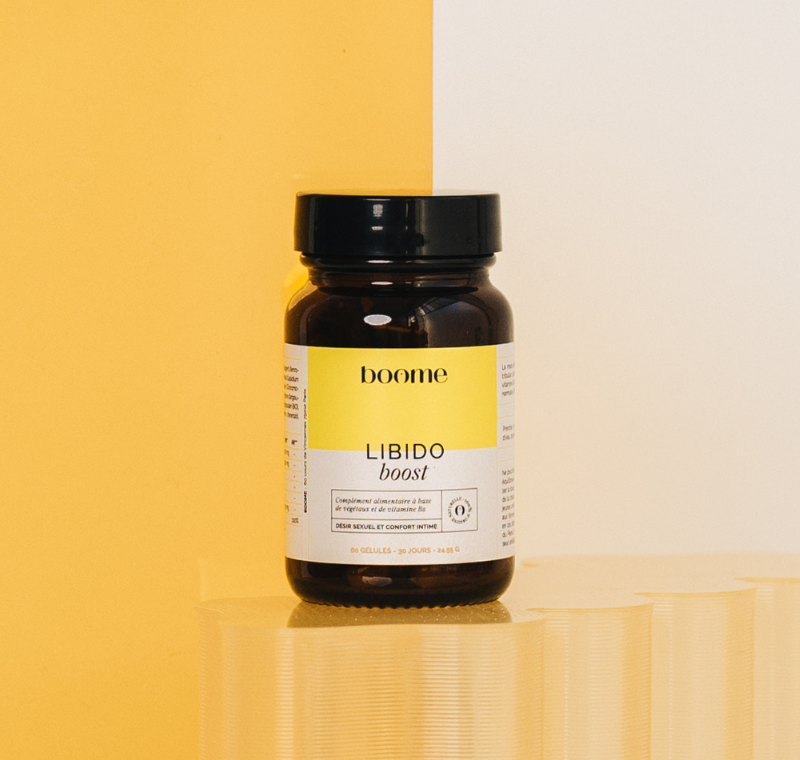
During pregnancy, your body does an extraordinary job. But did you know that a hidden player supports this entire process? The pelvic floor, this often overlooked muscle group, plays an essential role for you and your baby. However, pain, discomfort, and complications can arise if neglected. How can you strengthen it? Make it more flexible? Retrain it after childbirth? Discover everything you need to know to take care of your pelvic floor at every stage of motherhood. Ready to pamper your new favorite muscle? Follow the guide!
What is the perineum?
To fully understand the importance of the perineum, let's first look at what it's made of and where it's located. The perineum is a group of muscles and tissues located in the pelvis, between the pubis and the coccyx. Little is known about it... Yet, it plays a very important role in the human body. In women, it supports the pelvic organs, namely:
- the bladder;
- the uterus;
- and the rectum...
...While participating in sphincter control (urinary and anal) and pelvic stability. Quite a program.
Interesting fact: Men have a perineum too! Although it is less used for certain specific functions, it performs similar roles in men, such as organ support and continence.
What is the role of the perineum during and after pregnancy?
The perineum plays a (very) important role during pregnancy, childbirth and postpartum recovery.
During pregnancy
During pregnancy, the perineum is a true pillar for the mother-to-be's body! Because, as you've probably guessed, the more your baby grows, the more its weight exerts increasing pressure on this area. The role of the perineum then becomes fundamental. It must adapt to these changes to keep your pelvic muscles in place:
- the bladder;
- the uterus;
- and the rectum.
While absorbing the extra weight – to limit, among other things, urinary leaks. No small feat, you'll agree!
But that's not all: in addition to this mission, the perineum also plays an important role in stabilizing your pelvis and spine. It helps you maintain your balance, despite the changes in posture associated with your pregnancy. Incredible, right?
Can't wait for your pregnancy to come to an end so you can finally see your baby's face? Our article How to Give Birth Faster might be helpful!
During childbirth
During childbirth, the perineum also plays a very important role by gradually stretching to facilitate the baby's passage. A true natural shock absorber, it protects the surrounding tissues while supporting this delicate process. Its elasticity is then put to the test!
However, when it works properly, it helps reduce the risk of injuries, such as tears or episiotomies. The results: it allows for a smoother and less traumatic birth for both the baby and the mother.
Postpartum
Postpartum, the perineum continues to play its role like a leader, particularly in the recovery of the body of new mothers. Even if it is weakened by the intense stretching it underwent during childbirth, it must nevertheless continue to perform its functions. First and foremost, the perineal muscles keep the bladder, rectum, and uterus in place. They thus prevent those famous organ prolapses and urinary incontinence... Which we could all do without!
It also continues to stabilize our posture by continually supporting our pelvis and spine. Thanks to it, our body slowly regains a good position every day.
Finally, a healthy perineum contributes to the quality of resuming sexual intercourse. Proper muscle tone promotes more harmonious sensations and thus contributes to our intimate well-being.
Our grandmothers had their own little tricks for predicting the baby's arrival. Myth or reality? Check out our article: Grandma's Trick to Know When You're Going to Give Birth !
Symptoms of a perineal problem
Why do I have perineum pain when I'm pregnant?
First of all, rest assured: any pregnant woman can experience perineal pain. This is common and is mainly due to the daily changes the body undergoes during the nine months of pregnancy.
First of all... By the weight of your baby, of course! The more it increases, the more pressure can be felt on the perineum (located between the pubis and the coccyx).
Hormonal changes are another major culprit behind perineal pain. This is particularly true of the production of relaxin. This hormone, which all pregnant women secrete during pregnancy, helps loosen ligaments and tissues in preparation for childbirth. It's therefore very important! But it can also weaken the perineal muscles, causing some pain or discomfort.
The last thing that can cause harm to the perineum of expectant mothers is their daily movements. Lifting objects, standing for long periods of time... These postures can increase the pressure on the pelvic floor and aggravate pain. This is especially true in the last months of pregnancy, when the baby's weight is at its highest.
How do you know if you have a perineal problem?
Knowing how to recognize the signs of a potential pelvic floor problem will be important to allow you to act quickly. The most common symptom is undoubtedly urinary leakage. The major advantage of the pelvic floor is that, through its contraction, it allows for urinary continence. Therefore, it's a safe bet that it is slightly weakened if a pregnant woman notices urine loss during:
- of a coughing fit;
- of a sneeze;
- or physical effort.
This muscle then has difficulty supporting the bladder correctly.
New mothers also often report feelings of heaviness in the lower abdomen or perineum. Some describe a sensation of weight, an unpleasant feeling of "organ descent," especially at the end of the day. This may indicate the onset of prolapse, a cute little name for sagging pelvic organs.
Finally, do you experience localized pain in the perineum, without any apparent cause? It occurs during physical activity, or even at rest? This last point should also alert you.
If any of these symptoms arise, don't hesitate to consult your midwife so she can assess the condition of your perineum and relieve your pain as quickly as possible!
Our tips for taking care of your perineum
Pampering your perineum is essential to prevent annoying problems and facilitate recovery. Here are our top tips on how to do this.
How to strengthen your perineum during pregnancy?
Want to strengthen your pelvic floor muscles during your pregnancy? Great idea! We recommend, for example, starting some strengthening exercises. Nothing could be easier: simply contract your muscles as if you were trying to hold back a stream of urine. Then relax them. Bonus: you can do these daily exercises anywhere, anytime. Sitting, standing, or lying down; for a few seconds, several times a day, etc.
Additionally, try (as much as possible) to prioritize good posture in your daily routine. For example, avoid arching your back, as this increases pressure on the perineum... and the risk of urinary incontinence. You can also get a gym ball to sit on and do some pelvic rotation movements. This will relieve it and allow you to work your deep muscles.
In any case, be careful not to overstrain your perineum. Avoid heavy objects. And beware of overly intense breathing exercises!
How to relax your perineum before giving birth?
If you're nearing the end of your pregnancy, you can soften your perineum to prepare for the baby's passage. This will reduce the risk of tearing. Using a suitable massage oil, simply massage the entrance and exterior of the vagina using gentle, circular motions. This will improve the flexibility of the tissues during childbirth.
Gentle stretching can also be a good solution. Simple exercises, such as the cross-legged position or squatting, can gradually loosen this area.
Want to pamper yourself after your baby's birth? Our Moral Boost food supplement will make you look good!
How to re-educate your perineum postpartum?
A few weeks after giving birth, you can begin pelvic floor rehabilitation with your midwife or physiotherapist. Don't skip it! This is essential to help your pelvic floor muscles regain tone and elasticity.
This consists of a routine of exercises to contract and relax the perineal muscles. It can also be done using probes or through electrostimulation. In all cases, it is carried out gradually to avoid excess pressure.
Avoid lifting heavy loads for a while longer. Your perineum will slowly return to its normal position… But this requires careful training to ensure your postpartum well-being is top-notch.
In short, the perineum plays a very important role during pregnancy... and even after. So, to take care of it, adopt the right reflexes: strengthening during pregnancy, loosening up before delivery, and postpartum rehabilitation. Monitor pain, which remains frequent and normal. But if you're worried, talk to your midwife quickly, who will help you relieve it in no time!











